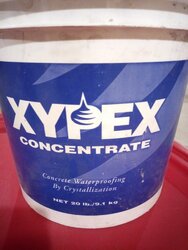Over the past few years, I've noticed a tiny trickle of water develop in one corner of my basement after heavy rains. It seeps up between the basement slab and block wall, and runs in a tiny stream to the nearest floor drain. After very prolonged rains, water will sometimes seep through the exterior bricks of the basement fireplace (which is on a wall adjoining the floor leak), and drip down onto the unused firebox in the basement.
I assumed this was due to some drainage issue on that side of the house, but I've had two excavator companies out, and they do not see any problem with surface slope or drainage to explain water accumulating along that foundation wall. They suggested perhaps it is just a high water table (?)
I'm having a hard time deciding what to do in this situation. The drains along the footing are nearly 70 years old, and maybe they are blocked or broken, but is it right that the only way to know is to dig them up? I called a couple drain/camera companies, and they say they have no way to access them with cameras,
Any suggestions? Thanks.
I assumed this was due to some drainage issue on that side of the house, but I've had two excavator companies out, and they do not see any problem with surface slope or drainage to explain water accumulating along that foundation wall. They suggested perhaps it is just a high water table (?)
I'm having a hard time deciding what to do in this situation. The drains along the footing are nearly 70 years old, and maybe they are blocked or broken, but is it right that the only way to know is to dig them up? I called a couple drain/camera companies, and they say they have no way to access them with cameras,
Any suggestions? Thanks.


